SafeNav To Improve Ship Collision-Avoidance
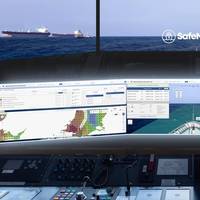
The collision between the MV Stena Immaculate and the feeder containership MV Solong off Grimsby in the UK last week highlights the continuation of maritime accidents, with human error often as the cause. The response to maritime safety concerns is often to invest in better sensors—more advanced Radars, AIS, ECDIS, LIDAR and, more recently, high-resolution computer-vision for enhanced situational awareness. "These tools are absolutely essential, but they only provide fragmented information.
MTF Releases Safety Recommendations for Ammonia-Fueled Ships
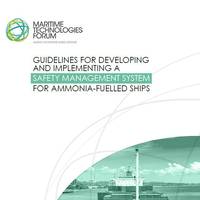
The Maritime Technologies Forum (MTF) released a report today providing recommendations on how to develop and implement a Safety Management System (SMS) for ammonia-fueled ships.Recognizing the industry's forecasts on the uptake of future fuels with low to zero carbon emissions, ammonia has emerged as a frontrunner. However, it presents new risks such as toxicity and corrosiveness.
Doomscrolling

This week at MarineLink…The term doomscrolling was one of the Oxford English Dictionary's words of the year in 2020.“the action of constantly scrolling through and reading depressing news on a news site or on social media, especially on a phone”It rose to prominence during the pandemic, but today’s social, political and economic unrest keeps it current.The behavior is rooted in the part of the brain often referred to as the lizard brain which promotes self-preservation and drives the fight-or-flight response to danger…
IACS Introduces Recommendations to Enhance Safety of Surveyors
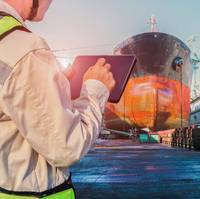
The International Association of Classification Societies (IACS) has published guidelines on safety standards for class surveyors work, Rec. 184.Highlights of the guidelines include:Comprehensive Risk Management: The document provides guidance for surveyors to exercise appropriate risk assessment and situational awareness prior to commencing work for prevention of accidents, near-misses, injury or ill health.Increased Focus on Collaboration: IACS encourages surveyors to share…
ABYC names Board Members, Award Recipients
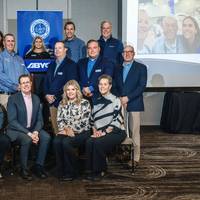
The American Boat & Yacht Council (ABYC) welcomed new board members and honored industry leaders at its annual meeting on Jan. 6 in San Antonio, Texas. The event marked the official start of ABYC Standards Week, where experts across the marine industry gather to review and update safety standards for the design, construction, and repair of recreational boats.ABYC Board Chair Jeff Wasil and President John Adey shared updates on the organization’s initiatives and recognized the volunteers who contribute to advancing boating safety.The 2025 board of directors was announced…
USCG Safety Alert: Mind Your Lifesaving Equipment Stowage
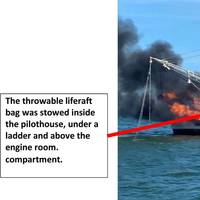
Two recent marine casualties on commercial fishing vessels (CFVs) highlighted hazardous stowage conditions that rendered onboard lifesaving equipment ineffective. During the first incident, a 41-foot CFV capsized and sank within two minutes after taking on water. The personal flotation devices (PFDs) were not stored in an easily accessible location, preventing the crew from retrieving them before exiting the vessel. Additionally, the liferaft and hydrostatic release unit were attached to an aftermarket fiberglass canopy…
Operator Falls Asleep at the Helm, Safety System Failed says USCG
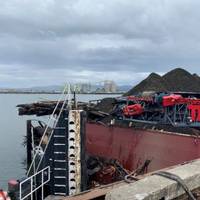
A towing vessel was pushing a barge loaded with aggregate when it allided with a bulk liquid transfer terminal pier on the Columbia River. The Coast Guard’s marine casualty investigation determined that the operator fell asleep at the helm, resulting in more than $1.5 million in property damage to the barge, handling equipment, and the facility. The incident occurred near a pipeline that could have discharged 25,000 gallons of synthetic diesel into the waterway.The investigation also identified the failure of the Pilothouse Alerter System as a key contributing factor.
Leveraging Human Factors for Safer Maritime Vessel Ops
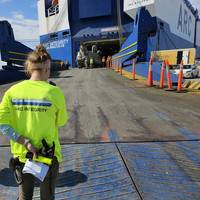
A safety management system, while vital, can only take a company so far. The real change has to be cultural throughout an organization.Many maritime companies can operate effectively under the International Safety Management Code, which governs safety and pollution prevention for ships. Frameworks like these enable carriers to act compliant with basic safety standards, but there is a significant human element not quite covered by such standards. In 2012, Allianz looked at around a century of maritime incidents, estimating that 75% to 96% of marine accidents involved some human error.
Sixth Edition of Guidelines on the ISM Code Released

The International Chamber of Shipping (ICS) has released the Sixth Edition of Guidelines on the IMO International Safety Management (ISM) Code.Print and ebook copies of the Guidelines are now available to buy.The sixth edition replaces the Guidelines on the Application of the IMO International Safety Management (ISM) Code, Fifth Edition, which has now been withdrawn from sale.The new edition includes new content:• New chapter on internal audits to help companies improve the SMS on an ongoing basis• Example annual program of drills and exercises• Updated publications list…
New Product: Survitec Gauntlet
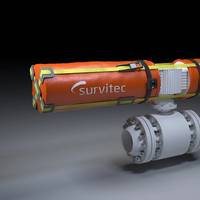
Survitec launched a new energy containment safety device designed to reduce the risks associated with catastrophic value actuator failures.The concept of the safety device was developed due to issues identified in the North Sea oil and gas sector, oil rigs, platforms, and floating installations, such as FPSOs and FSRUs. The Survitec Gauntlet can be applied to any facility that operates actuator valves and where risks need to be mitigated.Severe injury or death can be caused by the explosive forces released if a high-pressure spring-loaded actuator device fails…

